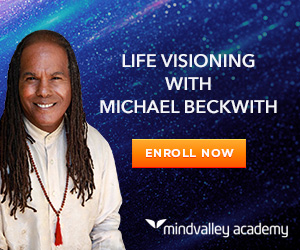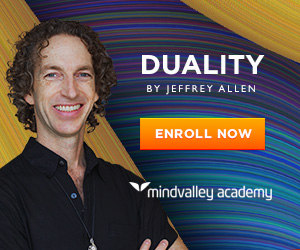We had a chance to chat with the director Jeremy Frindel (One Track Heart: The Story of Krishna Das). This time, he brings us an intriguing account of the man behind Ayurveda’s journey to the West in his new film The Doctor From India.
This inspiring documentary on Dr. Vasant Lad casts Ayurveda, an ancient Indian healing system, in a light that shows its relevance to a broad audience, from those who have never heard of it to those who have been living by its principles. More importantly, the film offers viewers the privilege of hearing from Dr. Lad, a great human force behind modern Ayurveda, himself. The Doctor From India premiered at the Santa Barbara International Film Festival on February 2, 2018.
Why a film on Ayurveda?
I don’t consider this to be a film on Ayurveda. It’s the story of Vasant Lad, whose life and work is of course intimately woven with the spirit of Ayurveda. But the scope of Ayurveda is so vast, I never set out to cover it with the film. It was an ongoing question for me in the making; how much basic information on Ayurveda was necessary for the viewer to be able to understand and appreciate Dr. Lad as a person? I tried to include just enough Ayurveda so that, what to me seemed the most simple and powerful things, someone new to the tradition could take away and hopefully inspire them in their life.
What are your hopes for this film?
My hope was to give a sort of cinematic darshan of Dr. Lad. Being around him, I feel he has the gift to open up an incredibly deep and loving space that can be transformative. Having spent a lot of time around him the last few years, I heard repeatedly from people of why they go to study with him or see him for healing. His presence moves people. So with the film – through his life story, seeing him with patients, moving about his world, the landscape, cinematography, music – my goal was to hopefully move the audience towards this experience of the presence and love that he has imbued his life with.

How did you approach Dr. Vasant Lad to propose the making of this documentary?
The first time I met Dr. Lad was on a retreat he led in New York and I was very moved by him. During the closing puja ceremony of the retreat I sat next to a man named Sartaj and we had a very nice connection right away. While we were talking, the idea floated through that Dr. Lad is such a gem and has led such a fascinating life that it would be wonderful to share that with more people through a film. This man Sartaj knew Dr. Lad and reached out to him to discuss the idea and shared with him my previous film about Krishna Das. We then had a phone chat with Dr. Lad. He liked the idea as a nice way to share his life’s work and gave us his blessing. Sartaj became the first investor on the project and a couple of months later I was in India filming!
The interviewees in the film talk about sharing Ayurveda through education to bypass issues of licensing and liability. Do you think this is better than if Ayurveda were to become regulated?
This is a complicated issue with pros and cons on both sides, and ultimately one that I don’t feel I have the depth of understanding to comment responsibly on. But on a basic level the lack of licensing creates a danger for practitioners and limits the number of people involved in practicing, and the scope of what they’re able to practice. But as soon as licensing and regulation become involved, it creates new limitations and boundaries upon the way people can practice. Even a surface experience of the healthcare industry in the U.S. gives a clear example of the complications and mess that come with involving bureaucracy in medicine and healing. At the same time, regulations provide certain protections for patients that are, of course, necessary and great. A whole film could be made on this issue alone. But one side effect from the limitations is that the way Ayurveda is generally taught and practiced in the U.S. is through diet and lifestyle, and a sense of integrating a spiritual awareness in every aspect of your life. These seem to be some of the great gifts Ayurveda has to offer.

Toward the end of the film, Dr. Lad says ‘Modern science is a moonshine, but sunshine is Ayurveda.’ Did he explain this more? What does he mean by this?
I wouldn’t attempt to speak for him or elaborate on his behalf. I found the statement to be a provocative one that I chewed on for a while afterwards, which is why I included it in the film. At that moment he was talking about how Ayurveda has been around for thousands of years, and western medicine for around 100 years, and that he has assimilated the breakthroughs and tools of western medicine into his wider view of health and wellness held in the Ayurvedic framework of life. Many people in the west speak of Ayurveda as a set of tools that can be integrated into the broader practice of western medicine. I think he was reversing that, saying to an audience in India that western medicine has some tools that can be incorporated into the broader worldview of Ayurveda.
Deepak Chopra explains how he modified the way Ayurveda is discussed so that he could reach a wider audience, whereas Dr. Lad didn’t do so, perhaps maintaining its cultural and historical ties. In your opinion, if Ayurveda is to be used effectively, does the language and terminology surrounding it need to be changed?
In my experience, Ayurveda is a spirit of healing, of life, of love, and of living with deep awareness and sensitivity. And that is something most effectively passed from one person to another. Through healing touch, through wisdom, through nature, and a general expansion of our worldview and sense of self. These things are ultimately beyond language. But when working with language, Sanskrit has such a depth of wisdom cooked into it, if you take the time to unpack some of the ideas embedded in the words, I’ve found they can root deeply inside you. Dr. Lad has created a school for people who want to deeply explore Ayurveda through this history and context, which I think is beautiful. And Dr. Chopra has found ways to translate some of these concepts in a digestible way for large numbers of people to encounter in a more casual context, which is also beautiful.

What types of viewers did you imagine would be drawn to this film?
It’s always mysterious who finds their way to a film. That’s a big part of the fun. It’s a much lower time commitment than reading a book, for instance, so it has a larger web of people it could pull in. Of course, those who already know him, or are familiar with Ayurveda, are the first ring of the audience I imagine will be initially attracted. Then people who are interested in holistic medicine, yoga, eastern spirituality would be the next ring. People from, or interested in India, in medicine and healing. And hopefully, those who are fans of cinema, and want to experience a remarkable man and life could be intrigued to spend time with the film.

What other films or books might you recommend to shed more light on the ideas in The Doctor from India?
Anybody interested in learning more about Ayurveda I would point towards the books and teaching of Dr. Lad, Dr. Robert Svoboda, and Dr. Claudia Welch. A film that was very influential as I was preparing and visualizing this film was Forest of Bliss, a stunning immersion into life in Benares by Robert Gardner from 1986. And for a deep experience of love through cinema, Harold and Maude. Again and again and again.
Enjoyed reading this article? Consider supporting us on Patreon. $2 donation will allow us to publish many more amazing articles about yoga and mindfulness.





